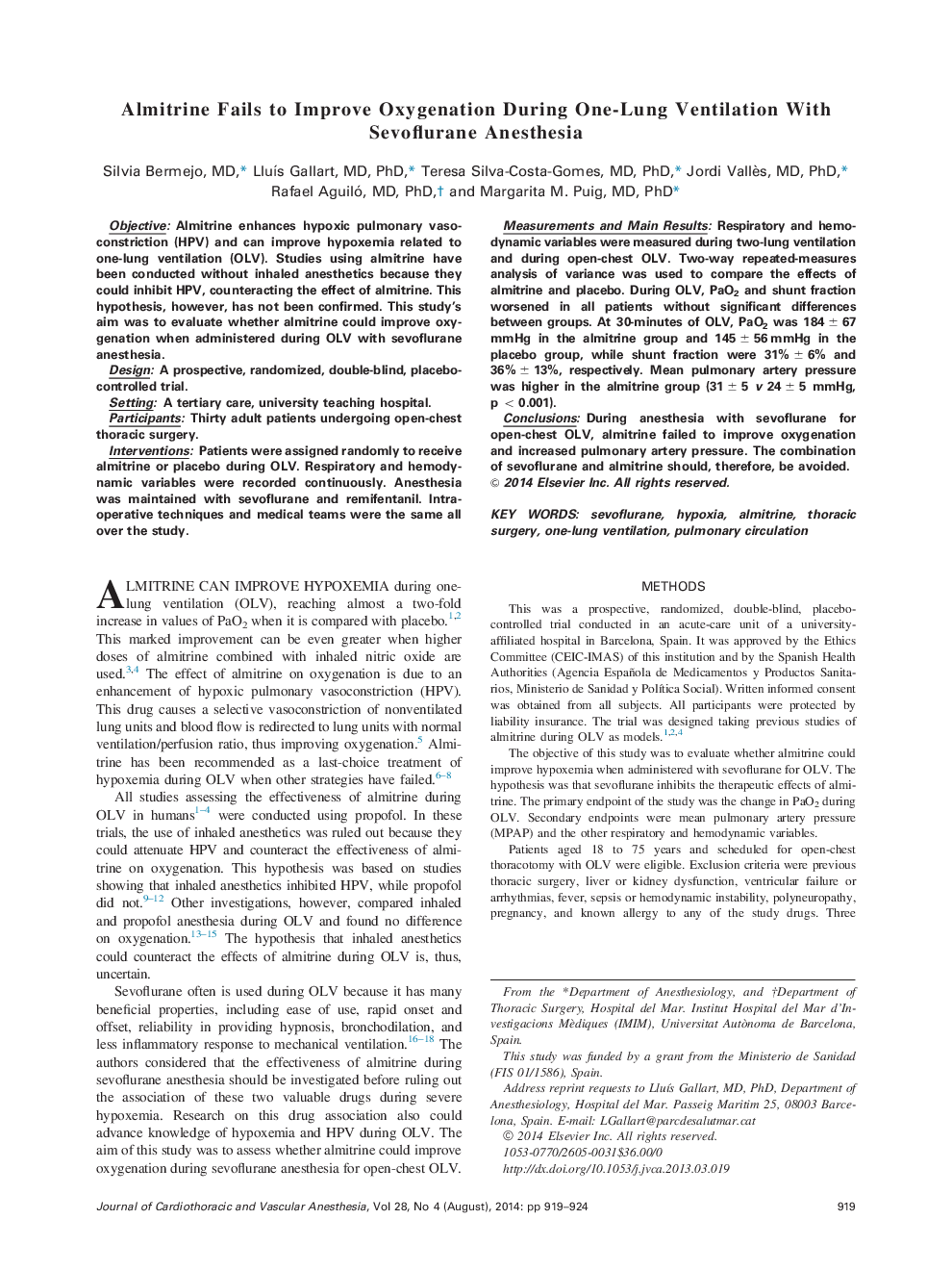| Article ID | Journal | Published Year | Pages | File Type |
|---|---|---|---|---|
| 2759412 | Journal of Cardiothoracic and Vascular Anesthesia | 2014 | 6 Pages |
ObjectiveAlmitrine enhances hypoxic pulmonary vasoconstriction (HPV) and can improve hypoxemia related to one-lung ventilation (OLV). Studies using almitrine have been conducted without inhaled anesthetics because they could inhibit HPV, counteracting the effect of almitrine. This hypothesis, however, has not been confirmed. This study’s aim was to evaluate whether almitrine could improve oxygenation when administered during OLV with sevoflurane anesthesia.DesignA prospective, randomized, double-blind, placebo-controlled trial.SettingA tertiary care, university teaching hospital.ParticipantsThirty adult patients undergoing open-chest thoracic surgery.InterventionsPatients were assigned randomly to receive almitrine or placebo during OLV. Respiratory and hemodynamic variables were recorded continuously. Anesthesia was maintained with sevoflurane and remifentanil. Intraoperative techniques and medical teams were the same all over the study.Measurements and Main ResultsRespiratory and hemodynamic variables were measured during two-lung ventilation and during open-chest OLV. Two-way repeated-measures analysis of variance was used to compare the effects of almitrine and placebo. During OLV, PaO2and shunt fraction worsened in all patients without significant differences between groups. At 30-minutes of OLV, PaO2was 184±67 mmHg in the almitrine group and 145±56 mmHg in the placebo group, while shunt fraction were 31%±6% and 36%±13%, respectively. Mean pulmonary artery pressure was higher in the almitrine group (31±5v24±5 mmHg,p<0.001).ConclusionsDuring anesthesia with sevoflurane for open-chest OLV, almitrine failed to improve oxygenation and increased pulmonary artery pressure. The combination of sevoflurane and almitrine should, therefore, be avoided.
